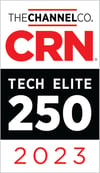No company is safe from natural disasters or data breaches. Unfortunately, many businesses don’t have business continuity or disaster recovery (DR) solutions in place. The massive power outages in Texas this winter are a case in point. The power utility was not expecting severe winter weather and had to resort to rolling blackouts to prevent a total system failure.
Most enterprises use multiple tiers of applications for data protection, each requiring its own infrastructure. This approach results in complex, siloed, and inefficient data protection. Instead, companies need simple, resilient, and efficient tools for data protection and DR that are tailored to meet recovery point objectives (RTOs) and recovery time objectives (RTOs).The good news for hyperconverged infrastructure (HCI) users is that its unified structure has many data protection benefits. HCI’s integrated structure and unified management makes it an ideal architecture for data protection and DR.
Why Your Company Needs Data Protection
Today, data is the most important asset companies have. Data feeds the advanced analytics applications that organizations use to make critical business decisions.
That’s why data protection is so important. Without current, complete, and accurate data, your company can’t operate. When faced with budgeting decisions, organizations fail to invest enough in data protection because they feel it is insurance against something that may never happen.
Trying to save money actually ends up costing these businesses. Data center outages have a devastating financial impact on the business, both directly and indirectly. Indirect costs include loss of reputation, lowered employee productivity, and decreased sales opportunities.
Some companies underestimate the risk of cybercrime, such as a ransomware attack. Not only does a ransomware attack hold your data hostage, but it can be costly whether you choose to pay the ransom or try to recover the data yourself.
HCI architectures provide greater protection against cybercrime and are well suited to business continuity planning. For example, Nutanix HCI offers Nutanix Flow to provide network micro-segmentation to prevent malware, such as ransomware, from spreading.
Built-in Data Protection
Traditional data protection solutions were developed for virtual machine backups or designed for three-tier architectures. The structure of HCI eliminates the need for disparate data protection tools that result in siloed backup and recovery. HCI enables applications and workloads to run on a single platform with one data fabric and one management plane.
The Nutanix HCI platform offers native Nutanix Mine or leverages partners like HYCU, a purpose-built backup and recovery software. The Nutanix operating system, AOS, has native data protection features, including intra-and inter-cluster snapshots and replication of virtual machines. Built-in data-at-rest encryption can be used to defend against data breaches.
The Nutanix HCI architecture also partners with other backup solutions, like Rubrik or Veritas. Rubrik solutions provide comprehensive data protection for Nutanix HCI environments, including automated backup, instant recovery, unlimited replication, and data archive. Veritas provides enterprise-grade, end-to-end data protection for Nutanix.
Disaster Recovery Capabilities
Your company’s infrastructure needs to be resilient enough to resist infrastructure failures that can result from outages. Systems need to be brought online at a second location after a system failure occurs at the primary location so that the systems and applications they support can be brought back into production.
By combining storage, compute, and networking with hypervisor software to create and run virtual machines, HCI is an ideal way to execute disaster recovery functions to protect against a catastrophic event, such as loss of a data center, equipment failure, and lack of network access.
HCI helps mitigate these risks because it is software-defined infrastructure running on commodity hardware, meaning that public or private cloud can be used as a replication site for DR instead of a secondary data center. With HCI, production environments can be regularly replicated. After the data center suffers a failure, a replica virtual machine can quickly be brought online and hosted on the hyperconverged system.
By running their HCI software stack in the Nutanix Cloud, organizations can take advantage of disaster recovery as a service (DRaaS). Nutanix Mine leverages HCI for secondary storage by integrating a tiered storage architecture with the Nutanix software stack.
By synchronously or asynchronously replicating data from the primary site to secondary sites, HCI protects your company against site-wide outages. HCI solutions automate and orchestrate disaster recovery by enabling failover to a secondary site and failback to the primary site. The HCI can host the failed over workload until the primary location is back up and running or even indefinitely, if needed. HCI allows companies to meet short RTOs, and snapshots make meeting small RPOs possible.
Always Be Available
Today, availability is the key to staying competitive, and backup and recovery is the key to staying available. Adopting HCI can simplify backup and disaster recovery for your company while modernizing your infrastructure. MarketsandMarkets identified disaster recovery capabilities as a key driver for HCI adoption in the next 4 years.
ProActive Solutions partners with leaders in HCI, delivering data center transformation and robust data protection technologies to our customers. We maintain strategic partnerships with HCI solutions, such as Nutanix. With Nutanix HCI, your company can achieve seamless business continuity using a full range of backup and disaster recovery options.
ProActive offers consultations and whiteboard sessions that help your company choose the right infrastructure and data protection tools to maintain business continuity and prevent data loss.
Learn how HCI fits into the digital transformation journey. Get a copy of the ProActive eBook The Complete Guide to Software-Defined Everything.



